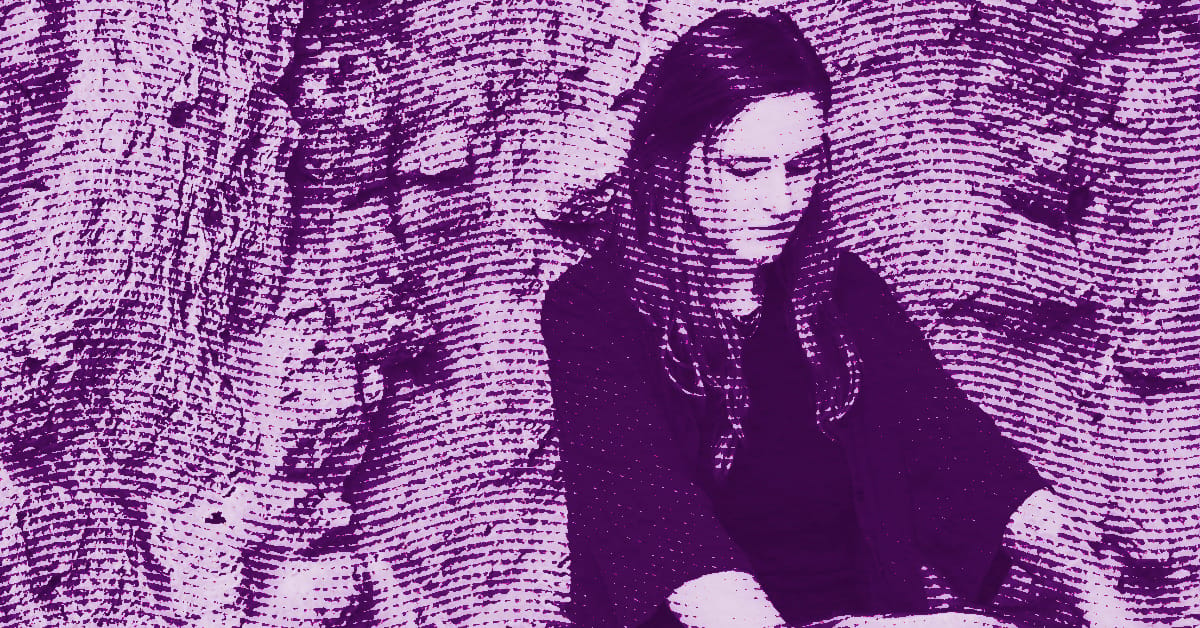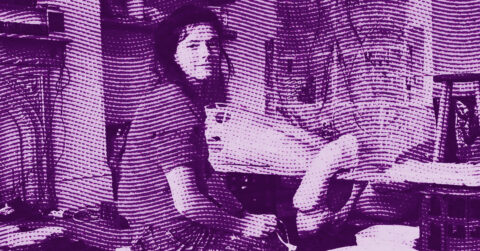Listen to me carefully, you bunch of snobs: Bianca Bondi is not one to leave you indifferent. This South African and Italian artist, born in 1986, has been developing for over a decade a universe where living matter dialogues with the invisible, where charred cupboards coexist with salt crystals, where the architecture of memory mingles with the remnants of ancient civilizations. Resident at the Villa Medici in 2024 and finalist for the Marcel-Duchamp Prize 2025, Bondi establishes herself as a key figure in contemporary art, not despite but precisely thanks to the quiet insolence of her practice. Because where others would seek to domesticate nature, she restores its rights; where some would want to freeze time, she celebrates its inevitable flow.
Architecture as a theater of absence
Bondi’s work unfolds above all in a meditation on habitat, on these structures we build to protect ourselves from the world and that end up bearing the marks of our ephemeral passage. Her installation Silent House, presented at the Musée d’Art Moderne de Paris, embodies this reflection strikingly: an entire house emptied of its occupants but saturated with their spectral presence. This house is not simply an abandoned domestic space; it is the sensitive cartography of a lost intimacy, a topographic survey of what remains after departure. The worn furniture, the clawfoot bathtub, the rusty metal bed frame compose a geography of desolation that is far from miserabilist. On the contrary, these objects radiate a paradoxical dignity, that of silent witnesses who have seen bodies and souls pass by.
The artist does not merely arrange furniture in an exhibition space. She organizes a true architectural drama where each element plays a precise role in the narrative of absence. The charred cupboard, mounted vertically on the wall, is no longer a simple storage piece but becomes a gateway to an indeterminate elsewhere, a charred reliquary of a memory that refuses to fade. This gesture of verticalization transforms the horizontal use of domesticity into an almost religious elevation, suggesting that architecture is never only functional but always symbolic. Bondi herself affirms: “I have always loved looking at altars, those spaces designed for something greater than us, for the gods” [1]. This statement enlightens her entire practice: each installation becomes a secular altar dedicated to the mysterious forces animating matter.
Architecture in Bondi’s work is never static. It is a process, metamorphosis, and decomposition. The salt basins she incorporates into her installations function like chemical clocks that mark the passage of time not by the movement of the hands but by the slow crystallization of salt on surfaces. Salt, a recurring material in her work, has this dual property of being both a preserving agent and a vector of corrosion. It simultaneously preserves and destroys, much like human memory, which distorts what it claims to safeguard. In Silent House, salt progressively covers objects with a whitish film, as if the house itself secreted its own funerary matter, its own mineral shroud.
This attention to cabinets, display cases, and wardrobes reveals an obsession with architectures of intimacy, those micro-storage spaces where our relationship with objects is concentrated. Bondi collects antique furniture, particularly these pharmaceutical cabinets where it is no longer clear whether they contained spices or medicines, remedies or poisons. This semiological uncertainty appeals to her: it blurs the boundaries between care and danger, between kitchen and laboratory, between domesticity and science. The cabinets then become echo chambers where all possible stories of the objects they housed resonate. Their aura, to borrow a concept that Bondi skillfully manipulates, does not come from their formal beauty but from their ability to have been silent witnesses to repeated gestures, of hands searching for a bottle in the shadows.
According to Bondi, the house is never closed upon itself. It overflows, it extends, it contaminates the exhibition space. The installations create interior landscapes where the visitor no longer quite knows whether they are entering a room, a garden, or a sanctuary. This genre confusion is deliberate: it aims to reconstruct the primordial experience of habitation before architecture was codified into distinct rooms and separate functions. When Bondi installs three tons of salt on the floor, she does not create a simple visual effect; she transforms the floor into a mineral beach, a domestic desert where the foot sinks as if in chemical snow. The floor becomes unstable, unsettling, and this physical instability is coupled with temporal instability: are we before or after the disaster? In a ruined space or one in gestation?
The Italian architect Carlo Scarpa said that “architecture is the art of building ruins.” Bondi seems to take this maxim literally: she constructs contemporary ruins, spaces that already carry within them the traces of their future decomposition. But these ruins are not melancholic. They vibrate with a particular energy, that of ongoing metamorphoses, chemical processes that slowly transform materials. Moisture seeps in, copper becomes verdigris, plants dry then regenerate. The house lives, in the most literal sense of the term, and this autonomous life of the materials partly escapes the artist’s control. Bondi readily acknowledges it: “Materials live their own life. I like to say that I set the conditions where I have an idea of what will happen, but then the materials do their own thing” [2].
The layers of history and forgotten rituals
If domestic architecture provides Bondi with the spatial framework for her installations, it is ancient history that offers her the temporal depth necessary for the elaboration of her personal mythologies. The artist does not merely reference the past; she summons it, revives it, makes it dialogue with the present in a non-linear temporality where Pharaonic Egypt stands alongside Imperial Rome and post-apartheid South Africa. This historical polyphony is never gratuitous: it responds to a need to situate artistic practice within a long genealogy that transcends contemporary fashions and inscribes itself in the duration of civilizations.
The residency at the Villa Médicis intensified this meditation on history. Rome, with its archaeological layers and architectural testimonies, offered an ideal terrain for an artist concerned with cycles of life and death. Bondi developed there a project of “rewilding” the Bosco, that mysterious oak wood of the French Academy in Rome. The concept of rewilding, borrowed from conservation biology, takes on a symbolic dimension with her: it is not only about returning nature to itself, but about reconnecting contemporary artistic practices with ancestral rituals that have been gradually forgotten or repressed. The abandoned beehives that she reactivated by installing a 19th-century altarpiece coated with pheromones and antique essences testify to this desire to create bridges between eras, between spiritual practices and ecology.
The Roman amphorae that she integrates into her installations are not mere classical references. They function as symbolic containers that have traversed millennia carrying in turn wine, oil, honey, perfumes. These vases bear witness to a civilization that gave considerable importance to substances, fluids, essences. Bondi reactivates this attention to liquid materials by creating her own colored solutions that evolve over time. The blue shifts to lilac, the lilac tends toward purple, in a slow chromaticism that evokes as much ancient dyes as laboratory chemical reactions. These colored basins are not simple decorative elements: they are biological clocks marking the passage of time at the molecular scale.
Ancient Egypt constitutes another major reference in Bondi’s work, particularly through the use of amaranth. This plant, which she appreciates “for its role in the funerary ceremonies of ancient Egypt and for its aesthetic qualities,” embodies this continuity between ritual practices and contemporary sensibility. The amaranths fall and flow like tears, creating a vegetal poetry of melancholy that recalls that beauty is often found in decay and withering. By choosing plants charged with historical symbolism, Bondi refuses the sanitized neutrality of certain contemporary artistic practices to fully assume the spiritual and cultic dimension of her work.
Salt, yet again, possesses a considerable historical and anthropological dimension. Used for food preservation since Antiquity, present in all religions and spiritual practices as an agent of purification and protection, salt weaves through civilizations as a common thread. Bondi exploits this symbolic ubiquity while associating it with its contemporary chemical properties: sodium chloride as a preservative but also as a corrosive agent that alters and transforms. In her installations, salt is never innocent; it carries within it the entire history of the bodies it has preserved, the wounds it has disinfected, the alliances it has sealed. When she covers a whale skeleton in resin made of salt crystals, she does not just illustrate a natural process; she reactivates an archaic funeral rite where the sea reclaims what belongs to it.
History for Bondi is never academic nor distant. It is embodied in concrete gestures: burning a wardrobe to purify it, coating a crucifix with beeswax to transform it into a pagan reliquary, planting endemic vegetation to anchor the work in the territory. These gestures belong to a universal anthropological repertoire found in all cultures: fire as an agent of transformation and regeneration, wax as a sacred material produced by bees, plants as mediators between the world of the living and that of the dead. By mobilizing these elements, Bondi is neither indulging in folklore nor exoticism: she reactivates ancestral knowledge marginalized by modern rationality but still resonates at the deepest level of our collective psyche.
The Wiccan magical practice she has claimed since childhood is not anecdotal in her approach. She explains: “I think it is my practice of magic that allowed me to discover art, which then became an extension of magic and took over. But today, I feel the need to bring magic back into art” [3]. This statement might seem naive or provocative if it were not supported by rigorous practice and a profound knowledge of materials. Bondi is not playing at witchcraft: she applies to contemporary art methodologies derived from spiritual traditions that grant agency to objects and substances. Paradoxically, this approach brings her closer to certain recent philosophical theories, notably those developed by Bruno Latour around “actant objects,” even though Bondi arrives at these conclusions by a radically different path, the path of sensory experience rather than theoretical speculation [4].
History according to Bondi is therefore never a backdrop nor a repository of scholarly references. It is a living, porous matter that continues to act on the present. Ancient civilizations have not disappeared: they persist in our daily gestures, in our relationship to objects, in our unconscious rituals. By making Roman amphorae dialog with 19th-century pharmaceutical cabinets and contemporary plants, Bondi rejects the linearity of progress to propose a cyclical and stratified vision of time where past and present coexist and mutually contaminate each other.
Towards a poetics of instability
What strikes one about Bondi, beyond the undeniable beauty of her installations, is the refusal of total mastery. In an artistic world often obsessed with control and technical perfection, she embraces the unpredictability of the processes she initiates. This humility towards materials, this acceptance that the work has an autonomous life that partly escapes its creator, may be her most radical contribution to contemporary art. She certainly inherits from Italian Arte Povera this attention to poor materials and this desire to let the matter express itself, but she adds a temporal and spiritual dimension that is uniquely hers. Whereas Arte Povera artists often worked with inert materials, Bondi favors living, organic, volatile substances that transform before our eyes.
This constitutive instability of her work questions our relationship to permanence and conservation. In an art system that traditionally values the work as a stable object meant to last centuries, Bondi offers pieces that change, degrade, regenerate. They exist less as fixed objects than as ongoing processes, as transitional states of matter in perpetual metamorphosis. This approach obviously raises pragmatic questions for collectors and institutions, but it also reflects a profound philosophical vision about the very nature of existence: everything is flow, everything is transformation, and wanting to freeze life into permanent forms is a deadly illusion.
Bondi’s attention to endemic plants demonstrates an ecological consciousness that is not limited to discourse but is embodied in practice. By systematically using local plants in her installations, she anchors her work in the territory where it unfolds and rejects the abstract universalism of certain contemporary art practices. Each installation thus becomes a celebration of local biodiversity, a tribute to the specific ecosystems that constitute the real richness of the world in the face of globalized homogenization. This approach resonates particularly today, at a time when the ecological crisis forces us to rethink our ways of living and producing.
Bondi stands at the crossroads of several traditions and influences. Her biographical path, born in Johannesburg, trained in South Africa and then in France, resident in Italy, makes her a transcultural artist who refuses singular affiliations. This multiple identity is reflected in her work, which simultaneously evokes African, European, and universal traditions without ever reducing itself to any one of them. She embodies this generation of artists for whom national borders have become porous and who build their plastic vocabulary through assumed and reappropriated borrowings.
Her nomination for the Prix Marcel-Duchamp, alongside Eva Nielsen, Lionel Sabatté, and Xie Lei, crowns a remarkable upward trajectory. But beyond institutional recognition, what matters with Bondi is the coherence of a vision that has asserted itself for more than a decade with rare consistency. From the salt-covered kitchen presented at the Lyon Biennale in 2019 to Silent House exhibited at the Musée d’Art Moderne de Paris in 2025, the same obsessions are found: domestic architecture as a stage of absence, organic materials as agents of transformation, ancient history as a symbolic reservoir, spirituality as a mode of knowing the world.
Some might criticize Bondi for a form of esotericism that borders on obscurantism. This would misunderstand the rigor of her approach and the precision of her work with materials. Although she is gradually moving away from collaborations with scientists, this is precisely because scientific terminology and experimental methodology do not correspond to her intuitive way of apprehending chemical processes. But this intuition is not ignorance: it stems from sensitive knowledge accumulated over the years, an intimate familiarity with the behavior of salt, wax, and plants. One could speak here of vernacular science, of artisanal know-how that does not go through academic protocols but remains rigorous in its application.
The question of re-enchanting the world, central to Bondi, is not about a regressive nostalgia for a mythical golden age when humanity lived in harmony with nature. Rather, it is about recognizing that modern instrumental rationality, despite all its undeniable benefits, has impoverished our sensitive relationship to the world by reducing objects to their mere utility value. Re-enchanting everyday objects means restoring to them that symbolic depth, that capacity to carry meaning beyond their immediate function. A wardrobe is never just a wardrobe: it is also the receptacle of clothes that have touched our skin, of scents that have accumulated there, of secrets hidden within. Bondi reminds us of this obvious truth that we tend to forget.
At the end of this journey through Bianca Bondi’s work, one truth stands out: we are facing a major artist whose work will continue to unfold and surprise us in the years to come. Her installation Silent House is not an achievement but a step in a research that constantly deepens. Yet this silent house eloquently speaks of our contemporary condition: we inhabit places that will outlive us, we handle objects that will bear the trace of our passage, we belong to a historical chain that precedes and infinitely surpasses us. Faced with this acute awareness of our finitude, Bondi offers neither easy consolation nor complacent despair. She simply invites us to observe carefully the slow metamorphoses around us, to accept instability as a fundamental condition of existence, and to celebrate the paradoxical beauty that emanates from processes of transformation and decay. Perhaps this is, ultimately, the profound meaning of her work: teaching us to contemplate ruin not as an end but as a promise, that of a possible regeneration from the rubble. In a world racing toward its own destruction with alarming haste, this lesson in humility and resilience resonates with particular urgency.
- Centre Pompidou, “When Magic Meets Art; the Enchanting Universe of Bianca Bondi”, Pompidou+, 2025.
- Art Basel, “Marcel Duchamp Prize 2025: Bianca Bondi”, September 2025.
- Ibid.
- CRAC Occitanie, “Exhibitions Alexandra Bircken & Bianca Bondi”, Sète, 2022.
















